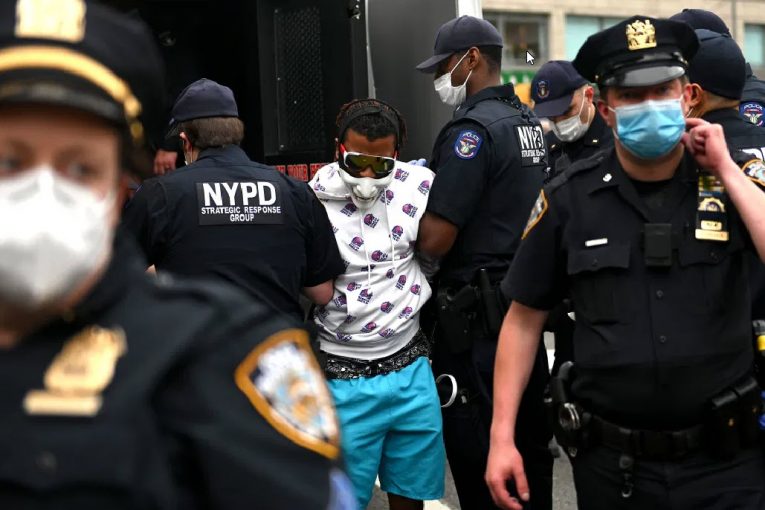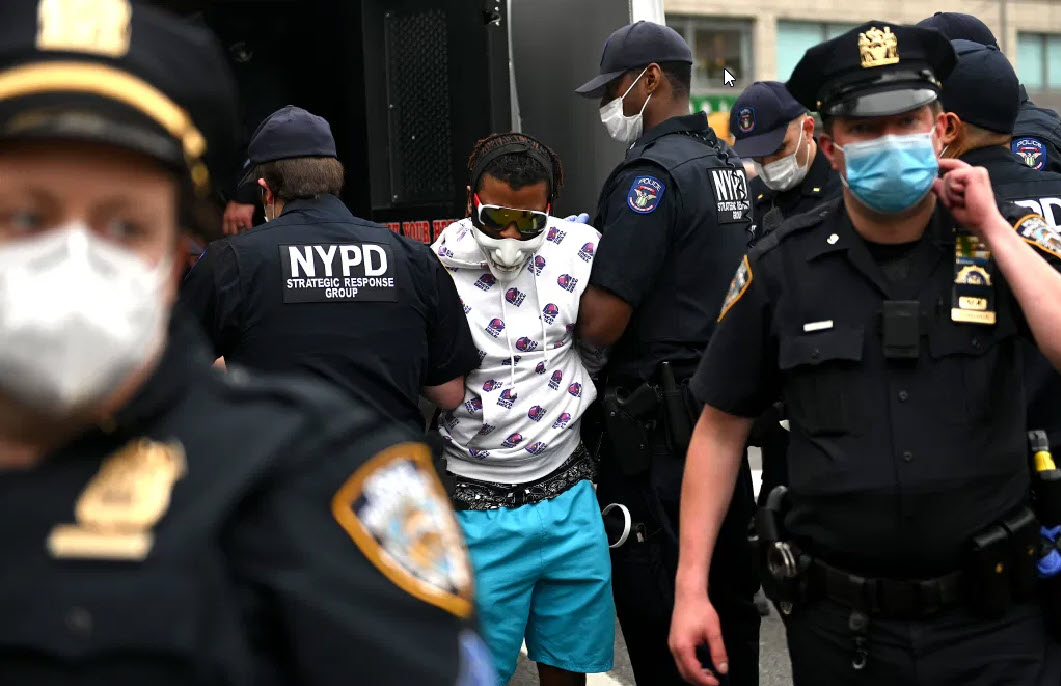

By Cailin Garcia
NEW YORK CITY – The New York Police Dept. response to the George Floyd protests was “excessive” against protestors and “undermined public confidence in the NYPD’s discharge of its responsibility to protect the rights of citizens to engage in lawful protest,” according to a report just released by the New York City Department of Investigation (DOI).
In late May of this year, protests erupted in cities across the country after George Floyd, an unarmed Black man, was killed by Minneapolis police.
New York City saw hundreds of protestors gather in the streets. Demonstrators were met with an aggressive police response by NYPD, including kettling of protest groups, mass arrests, and use of batons and pepper spray.
The New York City DOI launched an investigation, led by DOI Commissioner Margaret Garnett, into the conduct of police during the George Floyd protests, and found “several deficiencies” in the NYPD’s response to the protests.
“The problems went beyond poor judgment or misconduct by some individual officers,” said Commissioner Garnett to Politico reporters.
“The NYPD as an institution made a number of key errors or omissions that likely escalated tensions and the potential for violence, and certainly contributed to a public perception that the  department was suppressing rather than facilitating lawful First Amendment assembly and expression,” Garnett said.
department was suppressing rather than facilitating lawful First Amendment assembly and expression,” Garnett said.
The DOI’s investigation found that the NYPD “lacked a clearly defined strategy” to respond to the large protests. In the first days of the protests, the NYPD defaulted to “disorder control” tactics that only exacerbated the tensions between police and protestors, rather than de-escalating the situation.
Disorder control tactics used by NYPD included “kettling,” in which officers used formations to encircle the protesters and block their movements.
Protestors also complained that officers exercised “excessive force” against them, including overuse of batons and pepper spray and physical assaults of punching, kicking, and tackling demonstrators. In a particularly striking incident in Brooklyn, a police vehicle was driven into a crowd of protestors.
Videos of the protests found that numerous officers were not wearing masks or face coverings while policing the protests, despite a mandate by NYPD executives that masks must be worn due to health and safety concerns raised by the COVID-19 pandemic.
Failure to wear masks was “exactly the wrong message” read the DOI report, noting, “In the context of the Floyd protests, it reinforced public perception that the police do not think the rules that apply to others apply to them, and that they can disregard them with impunity.”
The report also noted that photographic and video evidence supported claims that several officers covered their badge numbers with black bands. Critics of the NYPD argue that these bands were used to avoid identification and accountability, while NYPD officials claimed that the black “mourning bands” were used to honor officers who lost their lives during the pandemic and should not have been used to cover ID numbers.
NYPD officers were also inconsistent in their enforcement of the 8 p.m. curfew imposed by Mayor Bill de Blasio, sometimes allowing demonstrators to remain in the streets and arresting large groups of protesters on other occasions.
According to the DOI, policing decisions relied too heavily on intelligence “without sufficient consideration of context or proportionality.” In the Mott Haven protests, the NYPD had received intel that violence was planned, but continued with forceful mass arrests even when no violence occurred.
“NYPD had valid concerns about preventing violence, property damage, or looting that transpired during the early period of the Floyd protests. Yet by adopting a broad disorder control approach focused on force, control, and arrests, the NYPD gave insufficient attention to the need to balance the important objective of preventing additional violence and damage with the imperative of protecting citizens’ rights to engage in lawful protest,” said the DOI report.
The investigation found that many of the police officers deployed at the demonstrations lacked sufficient training on policing protests. Though the Police Commissioner ordered all officers to participate in additional protest training after the Floyd protests, the DOI felt that new training “focused on disorder control methods, without a sufficient community affairs or de-escalation component.”
The NYPD also lacked a reliable, consistent data collection system for tracking relevant protest data, including the total number of protest-related arrests. NYPD records reported differing arrest numbers due to their different sources and collection methods.
In the conclusion of the report, the DOI made several recommendations to the NYPD for improving its policies and practices for policing protests.
Recommendations included stronger outside oversight of the NYPD, creation of a Protest Response Unit, publishing a patrol guide policy on protest policing that outlines demonstrators’ First Amendment rights, reducing the role of the Strategic Response Group, and minimizing the use of police in riot gear.
“The Department should embrace the proposed reforms as part of larger efforts to repair police-community relations,” said the DOI report.
NYC Police Commissioner Dermot Shea read the report and claims he will implement its recommendations in the future.
“In general terms the report captured the difficult period that took place in May/June of 2020 and presents 20 logical and thoughtful recommendations that I intend to incorporate into our future policy and training,” said Commissioner Shea in a public statement.
But in interviews with the DOI, other top NYPD officials stated that they would not have done anything differently in their response to the George Floyd protests. It’s unclear whether the NYPD overall will be implementing the DOI’s recommendations.
Mayor Bill de Blasio released a video and statement on Twitter in response to the report, stating, “I want to be really clear that those days in May and June were not like anything I think that’s happened before in this city’s history.
“It’s a season of reflection right now, that’s what the holidays are,” said Mayor de Blasio. “I read this report, and I agree with it. I agree with its analysis and I agree with its recommendations, because it makes it very clear we got to do something different, and we got to do something better.”
 Cailin Garcia is a senior at UCLA, majoring in Sociology with a minor in Professional Writing. She is from Santa Clarita, California.
Cailin Garcia is a senior at UCLA, majoring in Sociology with a minor in Professional Writing. She is from Santa Clarita, California.
To sign up for our new newsletter – Everyday Injustice – https://tinyurl.com/yyultcf9
Support our work – to become a sustaining at $5 – $10- $25 per month hit the link: